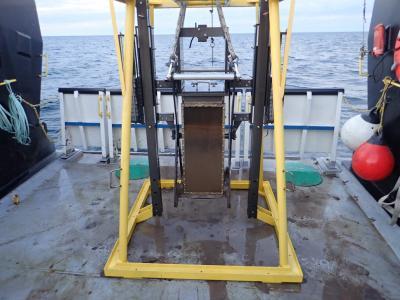In September 2021, scientists from University of Minnesota Duluth, U.S. Geological Survey Mercury Research Laboratory, EPA and Oak Ridge Institute for Science and Education completed EPA’s Great Lakes Sediment Surveillance Program survey in Lake Superior. Using the Research Vessel Lake Guardian as a sampling platform, scientists collected surface sediment and sediment cores to characterize the spatial and temporal distribution of persistent bioaccumulative and/or toxic chemicals in the Great Lakes. Some key chemicals being analyzed include polychorinated biphenyls, polybrominated diphenyl ethers, per- and polyfluoroalkyl substances and mercury. Scientists collected surface sediment at 31 sampling stations, including five nearshore river mouth stations.



